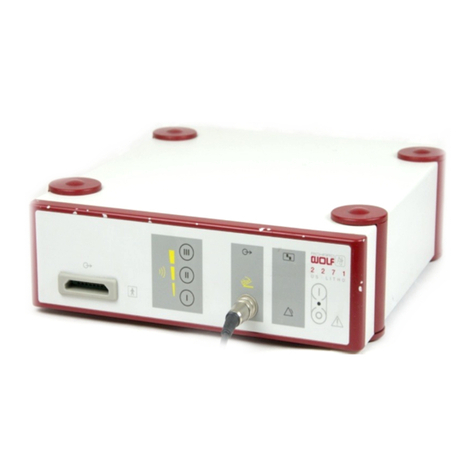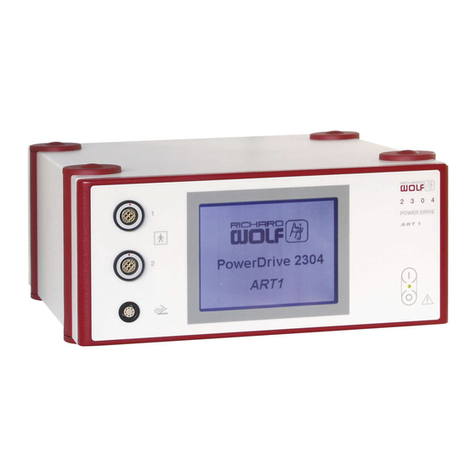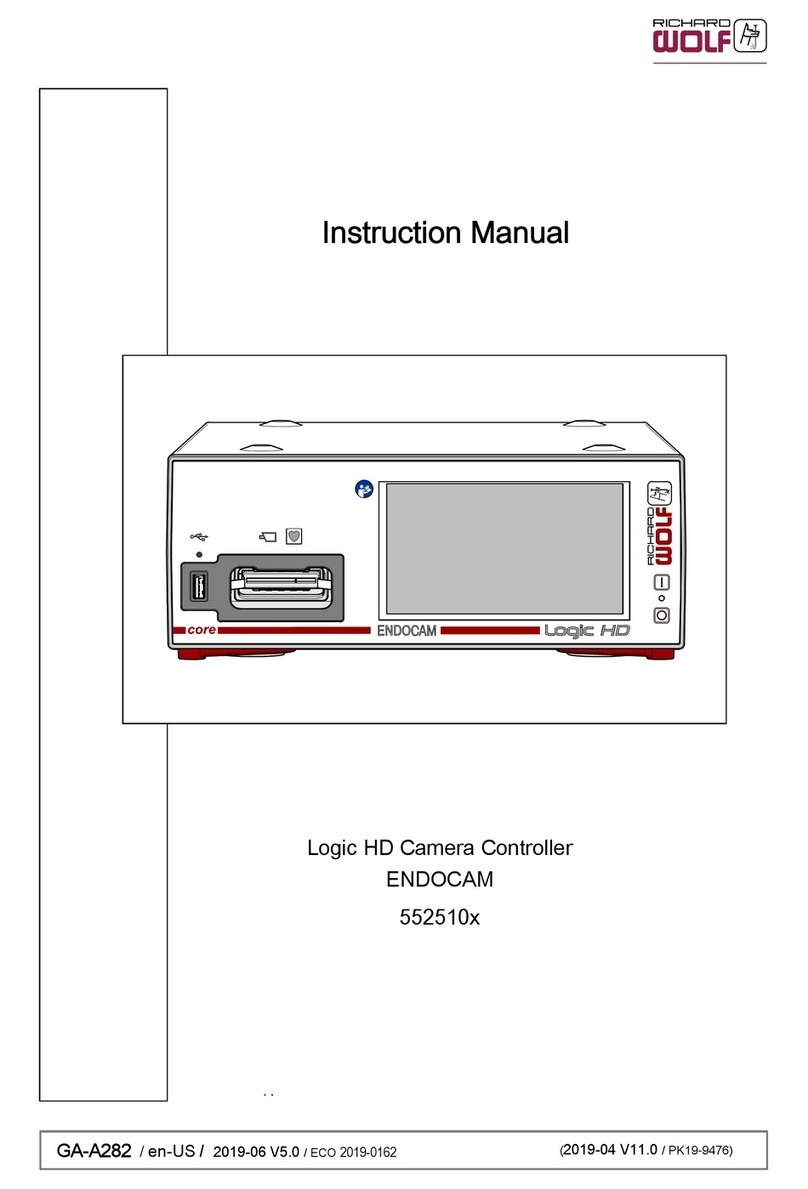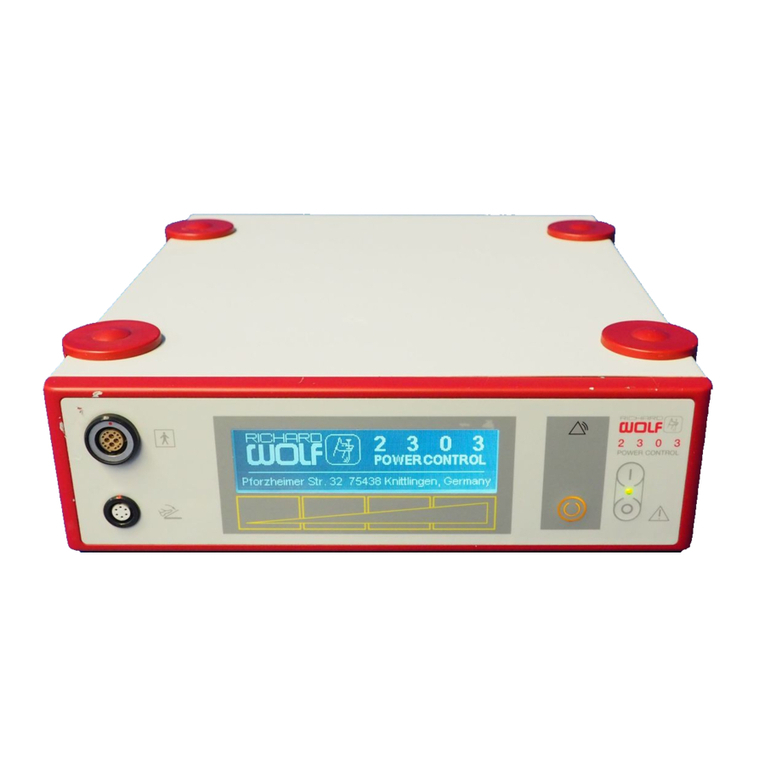
en
Table of Contents
1 Important User Notes ......................................................................................................................................................... 3
2 General Safety Notes .......................................................................................................................................................... 4
3 General Information ........................................................................................................................................................... 5
3.1 Device Description ................................................................................................................................................................... 5
3.2 Used as Intended and Contraindications .......................................................................................................................... 5
3.2.1 Intended Use.............................................................................................................................................................................. 5
3.2.2 Contraindication....................................................................................................................................................................... 5
3.3 General Warnings and Precautions .................................................................................................................................... 5
3.3.1 General Warnings .................................................................................................................................................................... 5
3.3.2 Precautionary Measures......................................................................................................................................................... 11
4 Device Startup..................................................................................................................................................................... 13
4.1 Delivery Scope ........................................................................................................................................................................... 13
4.2 Setting up and Connecting the Device............................................................................................................................... 13
4.3 Mounting the Pump ................................................................................................................................................................ 15
4.3.1 Mounting on Stand.................................................................................................................................................................. 16
4.3.2 Mounting on Device Cart....................................................................................................................................................... 17
4.4 Front of the Device................................................................................................................................................................... 17
4.5 Rear of the Device .................................................................................................................................................................... 18
5 Operating the Device.......................................................................................................................................................... 19
5.1 Function test.............................................................................................................................................................................. 19
5.1.1 Preparing the Function Test .................................................................................................................................................. 19
5.1.2 Irrigation Test ............................................................................................................................................................................ 19
5.1.3 Suction Test................................................................................................................................................................................ 20
5.2 Use of the Device During Surgery........................................................................................................................................ 20
5.3 Overview of the Usable Tube Sets....................................................................................................................................... 21
5.4 Inserting a Tube Set ................................................................................................................................................................. 22
5.5 Connecting the Irrigation Fluid Bags.................................................................................................................................. 25
5.6 Irrigation ..................................................................................................................................................................................... 25
5.7 Suction......................................................................................................................................................................................... 26
5.8 Replacing the Suction Container ......................................................................................................................................... 27
5.9 Removing a Vacuum Tube System....................................................................................................................................... 27
6 Safety Functions.................................................................................................................................................................. 28
6.1 Pressure Limitation at 400 mmHg ...................................................................................................................................... 28
6.2 Motor Cutout at 500 mmHg................................................................................................................................................. 28
6.3 Device Self-Test ......................................................................................................................................................................... 28
7 Care and Maintenance........................................................................................................................................................ 29
7.1 Cleaning the Device................................................................................................................................................................. 29
7.2 Care and Maintenance of Reusable Tube Set ................................................................................................................... 29
7.2.1 Cleaning the Reusable Tube Set ........................................................................................................................................... 29
7.2.2 Disinfecting the Reusable Tube Set..................................................................................................................................... 29
7.2.3 Sterilizing the Reusable Tube Set......................................................................................................................................... 30
7.3 Care and Maintenance of Reusable Tube Sets ................................................................................................................. 30
7.3.1 Cleaning Reusable Tube Sets................................................................................................................................................. 30
7.3.2 Disinfecting Reusable Tube Sets .......................................................................................................................................... 31
7.3.3 Sterilizing Reusable Tube Sets .............................................................................................................................................. 32
7.4 Annual Inspection .................................................................................................................................................................... 33
7.5 Maintenance by Authorized Service Technician.............................................................................................................. 33
7.6 Changing the Fuse ................................................................................................................................................................... 34
8 Annual Inspection ............................................................................................................................................................... 35
8.1 Safety Test................................................................................................................................................................................... 35
8.2 Irrigation Test ............................................................................................................................................................................ 35
8.3 Suction Test................................................................................................................................................................................ 36
9 Technical Data..................................................................................................................................................................... 37
10 Accessory List ...................................................................................................................................................................... 39
11 Electromagnetic Compatibility........................................................................................................................................... 40
11.1 Impact of Mobile and Portable HF Communication Devices....................................................................................... 40
11.2 Electrical Connections............................................................................................................................................................. 40
11.3 Guidelines and Manufacturer’s Statement – Electromagnetic Emissions .............................................................. 40
11.4 Guidelines and Manufacturer's Statement/Electromagnetic Interference Immunity ........................................ 41
11.5 Guidelines and Manufacturer's Statement/Electromagnetic Interference Immunity ........................................ 42
12 Error and Warning Messages.............................................................................................................................................. 44
13 Test Record .......................................................................................................................................................................... 46
13.1 Test Log........................................................................................................................................................................................ 46
13.2 Return Form ............................................................................................................................................................................... 47
14 Glossary............................................................................................................................................................................... 48
Index.................................................................................................................................................................................... 49
































